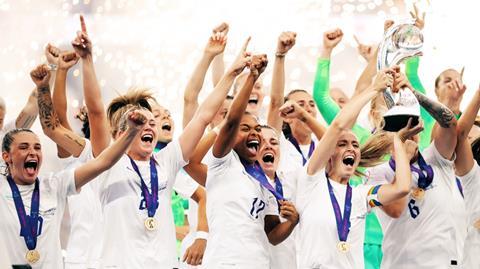Anna Reynolds, consultant and Yonder Consulting, believes broadcasters could miss the opportunity available with women’s sport

Driven by the growing success of the England women’s football team, the most recent FIFA Women’s World Cup and the Women’s Euros became two of the most highly viewed and celebrated moments in UK broadcasting history.
But while they may have helped the women’s game reach new audiences and inspire the next generation of female athletes, new research suggests that the impact of these events is short-lived.
Because, although the 2023 Women’s World Cup saw record viewing and attendance figures, data from Yonder Consulting showed interest in the sport actually declined - from 42% immediately after the tournament to 37% three months on.
While this shows the important role broadcasters play in helping the game reach new audiences, the England Lionesses aren’t due to appear in another major tournament until mid-2025. Broadcasters need to step up and help keep the spotlight on women’s football and sport in general, as there are a whole host of mutual benefits in doing so.
Growing the game
While the growth in interest and participation around women’s football is still higher than when the 2023 Women’s World Cup started, retaining interest is just as important as finding it. New audiences need to be constantly engaged and not just left on the sidelines.
The first step for broadcasters is simple - get as many eyeballs on it as possible. Being more consistent with coverage and putting more women’s sports at peak times would be a proactive and morally strategic move, demonstrating their commitment to providing equal opportunities in sport.
We can only imagine the revenue opportunities that would exist if women’s sport were as widely supported by broadcasters as it is in men’s sports. But that’s the problem - it’s only a dream at the moment. What we need is leadership and for broadcasters to be brave as investing in women’s sports seems like an open goal right now for someone to take the lead.
Not only could broadcasters use this to engage new audiences and attract new customers, but it would also demonstrate a commitment to boosting women’s sports as well as pave the way for greater opportunities to build brand loyalty, particularly from newly represented groups and audiences.
The financial savviness of pursuing women’s sports as a content stream is also clear. At some point in 2024, revenue generated by women’s elite sport will surpass $1 billion (£790m) for the first time - a staggering 300% increase since 2021. This demonstrates that women’s sport is a huge growth market, and we’re only seeing the beginning of its popularity now that it is becoming more widely accessible. Such an investment of time and money at this stage could see a huge return in the not-too-distant future.
Outside of live broadcasting, the sports documentary space also feels like a missed opportunity. The release of Game On on Netflix last year was a positive sign, but it still flew under the radar compared to other titles which primarily focused on men’s sports, such as Drive to Survive. In fact, of the 31 titles listed under ‘British sports and fitness” on Netflix, only four feature women on the cover.
Don’t forget the audience
The key to tapping into the multiple opportunities that women’s sport brings broadcasters is understanding the audience. Truly understanding all sports fans (including an emerging audience of young, female sports fans) will be vital in ensuring authentic and long-lasting impact. Not only can this help widen and capture audiences, but it would also go a long way in continuing the immense momentum we’ve seen in growing women’s sports.

Anna Reynolds is a consultant at Yonder Consulting








No comments yet